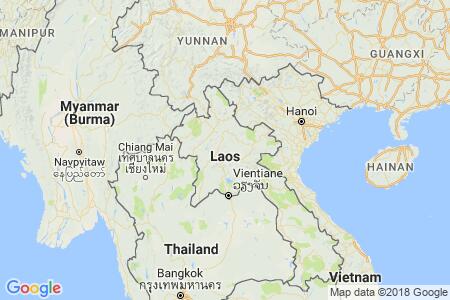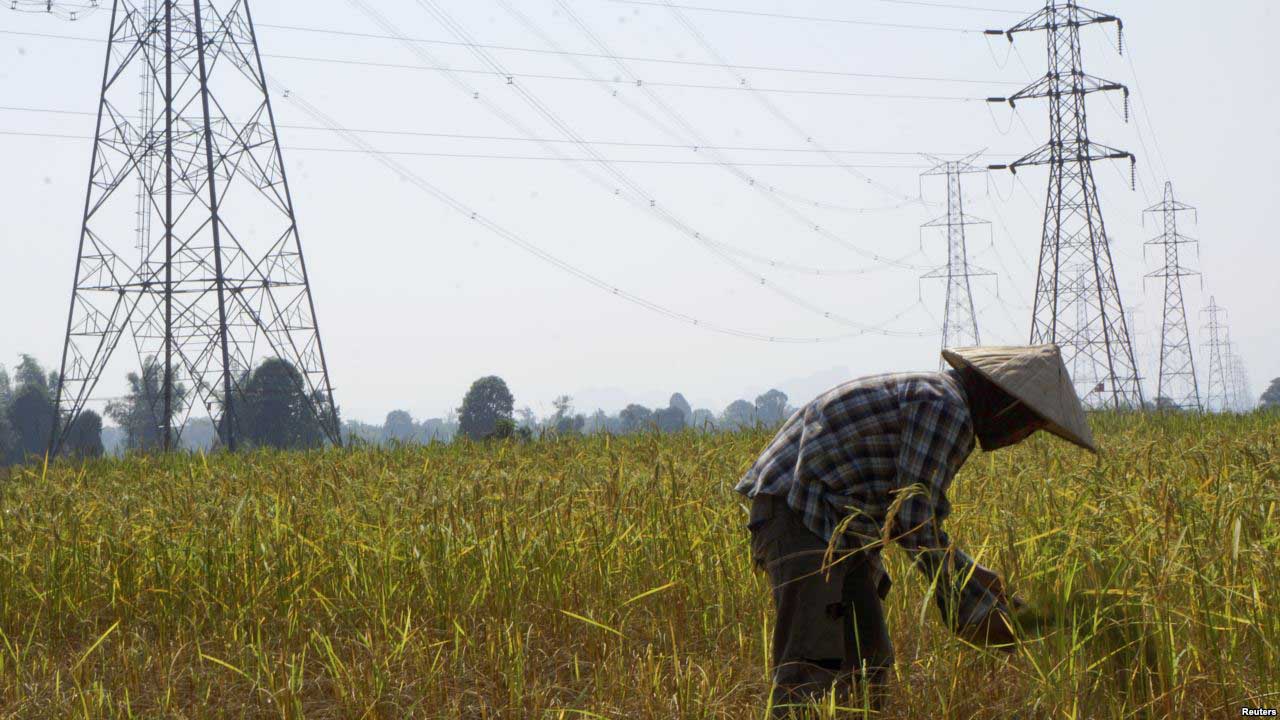A farmer works in paddy field under the power lines near Nam Theun 2 dam in Khammouane province, Laos. (Reuters)
Radio Free Asia
The Central Government in Laos Takes Over Railway Compensation Operations
Laos’ central government in Vientiane is taking away from local governments the responsibility for determining compensation for people displaced by construction of the Lao-China railway project, RFA’s Lao Service has learned.
The move comes amid concerns that provincial governments will set different compensation rates for the U.S. $6 billion-project that forms part of a 3,000-kilometer rail link that will run from Kunming in southern China’s Yunnan province through Laos, Thailand and Malaysia to Singapore.
“The Lao government is considering the compensation rate for people who will be resettled for the Lao-China railway project, instead of leaving it up to the provincial authorities,” said an official of Oudomxay province who spoke on condition of anonymity.
“Based on the resolution of previous meetings, the provincial authorities were allowed to set compensation, but the concern is that the rate will not be calculated equally – meaning that one province pays less while another province pays more,” the official added. “Thus, provincial authorities cannot finalize the cost, so it is better that the central government take responsibility of it.”
Setting the rate of compensation for citizens displaced by the railway is among the topics that will be discussed at future meetings among officials from the public works and natural resources agencies, the central government and local authorities. Reaching a decision is expected to take some time because the government wants to allow people who lose their land to express their concerns.
Under Lao decree 192, people who lose land to development projects must be compensated for losing their incomes, properties, crops and plants. The project owners are required to guarantee that living conditions for those displaced will be as good or better than they were before the project was started.
While the central government is taking over the compensation issue, officials in Oudomxay province have already surveyed people expected to be affected by the railway’s construction, the Oudomxay province official said.
“So far, some families agreed to be resettled, if they get fairly compensated in money and land. If not, they will not agree to be removed,” the official said.
RFA contacted the consulting company responsible for delivering compensation, but an official there declined to provide any details because all the information is controlled by the central government.
Ratthanamany Khounnivong, deputy minister of public works and transport, who is in charge of the Lao-China railway project, also refused to give any details.
In Vientiane’s Saythany district, around 300 families are expected to be resettled for the railway project, according to information from the Ministry of Natural Resources and Environment.
So far about 30 Chinese workers have been in Oudomxay province’s Nga district, surveying the area for tunnels, but they have yet to start digging, according to the official.
In the meantime, the Ministry of Labor and Social Welfare is preparing to issue work permits for the Chinese who will work on the railway project and other projects.
Reported by RFA's Lao Service. Translated by Ounkeo Souksavanh. This story originally appeared on rfa.org. (July 27, 2016)

Laos
Work began on the controversial Laos-China railway as crews started clearing the right-of-way in the ancient Lao city of Luang Prabang late December 2016, but questions over who will get the bulk of the jobs building the U.S. $6 billion project and how much people displaced by the construction will get paid still linger.
BY THE NUMBERS
- Distance: 420-kilometer (261-mile)
- Total Cost: $6 billion
- Lao: $840 million
- Financing: If the Lao government can’t provide its share, China has agreed to provide a low-interest loan of $480 million.
